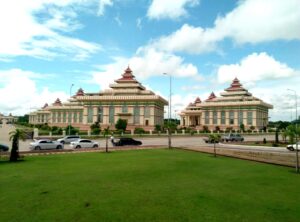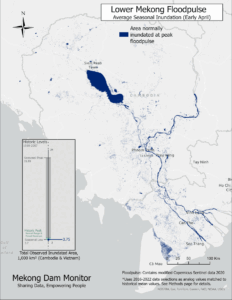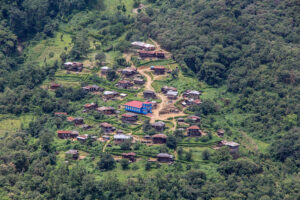
Methodology
The preliminary information source is listed in each data entry. In most cases the preliminary source was an organization directly involved in the development of an infrastructure project: a government agency; project developer, financier, or contractor; lending agency; or a multinational development bank. Some initial data points were drawn from research institutions which list their methodologies. Data points from other sources were mostly double-verified against other trusted sources or against at least two additional outside sources like news or press releases, which are included in the links. In cases where this was not possible or where there were discrepancies, data points have been set aside and will be held in a separate dataset until information can be verified. Any new data points submitted by the user community will go through a similar verification process before being entered into the dataset.
The Tracker is a living platform and is updated on a quarterly basis with new project announcements and updates, reference resources, analytical outputs, and additional layers. Date of update for individual data points is listed in the dashboard application. The Tracker’s functionality will be updated and expanded throughout the USAID Mekong Safeguards Project timeframe (2018 – 2023) in response to stakeholder feedback. We welcome feedback and invite you to get in touch with us at [email protected] with comments.
Referenced Data Sets
This list is not exhaustive but provides an overview of many of the data sets from other reputable research organizations which we utilized in creating and verifying our own data set.
American Enterprise Institute / Heritage Foundation: https://www.aei.org/china-global-investment-tracker/ American Enterprise Institute publishes the China Global Investment Tracker, which covers over 3100 transactions related to China’s global investment and construction.
Boston University: https://www.bu.edu/gdp/databases/ Boston University’s Global Development Policy Center publishes the China’s Global Energy Finance database, which focuses on financing for energy projects by the China Development Bank and the Export-Import Bank of China.
Carbon Monitoring for Action (CARMA): https://www.carma.org/ Center for Global Development publishes the Carbon Monitoring for Action (CARMA) database, which compiles estimates of CO2 emissions for 50,000 power plants around the world and the identities of the 4,000 firms that own them.
Center for Strategic and International Studies (CSIS): https://reconnectingasia.csis.org/database/ Center for Strategic and International Studies publishes the Reconnecting Asia project, which maps out connective infrastructure across Eurasia, including roads, railways, seaports, intermodal facilities, and power plants.
China Aid Data: https://china.aiddata.org/ AidData, a research lab at the College of William & Mary, tracks overseas Chinese official finance between 2000-2014, including both Chinese aid and non-concessional official financing.
Global Energy Monitor: https://globalenergymonitor.org/coal/global-coal-finance-tracker/ Global Energy Monitor’s Global Coal Plant Tracker provides information on 14,000 existing, proposed, and retired coal-fired generating units around the world.
Global Energy Observatory (GEO): https://globalenergyobservatory.org/ Global Energy Observatory is an open-source database that compiles various sets of data related to energy development, consumption, and transmission across the world.
Open Development Mekong: https://opendevelopmentmekong.net/search/data/ Open Development Mekong is a platform for aggregating and sharing information, maps, and data about development issues and challenges in the Lower Mekong countries.
Sourcewatch: https://www.sourcewatch.org/index.php?title=SourceWatch Sourcewatch is an open-source encyclopedia on corporate or government public relations campaigns sponsored by the Center for Media and Democracy that draws on information from the Global Coal Plant Tracker.
UNFCCC Clean Development Mechanism: https://cdm.unfccc.int/ The Clean Development Mechanism registers and tracks carbon emission-reducing projects in developing countries and includes more than 8,000 searchable projects in its database.
WLE Mekong: https://wle-mekong.cgiar.org/ WLE Mekong is a research-for-development (R4D) initiative that aims to improve governance and water resource management in the Greater Mekong Region by generating and sharing knowledge and the practices needed to create it.
World Resources Institute (WRI): https://resourcewatch.org/data/explore/Powerwatch World Resources Institute publishes the Global Power Plant Database, which covers approximately 30,000 power plants from 164 countries, including thermal plants and renewables.
Source Clarifications
While source links are available for most items, but in some cases, the original data source is no longer available. Below we provide broad clarification on the organizations and acronyms referenced as data sources in the infrastructure project data sets. The list is in alphabetical order.
Asian Development Bank (ADB): https://www.adb.org/
Electricity Generating Authority of Thailand (EGAT): https://www.egat.co.th/en/
EGAT PDP: https://www.egat.co.th/en/images/about-egat/PDP2015_Eng.pdf These projects are taken from the Thailand Power Development Plan 2015 – 2036, published in 2015 by the Electricity Generating Authority of Thailand.
International Finance Corporation (IFC): https://www.ifc.org Data taken from the Baseline Assessment Report Hydropower: Strategic Environmental Assessment of the Hydropower Sector in Myanmar.
IUCN, or International Union for the Conservation of Nature: https://www.iucn.org/ IUCN directly contributed to the collection of online data. See the link in project descriptive data for preliminary data source
Ministry of Electricity and Energy, Republic of the Union of Myanmar: https://www.moee.gov.mm/
Ministry of Energy and Mines, Lao PDR: https://poweringprogress.org/ Refers to an official list of projects for the development of domestic water resources, downloaded in 2016 from the Ministry of Energy and Mines, Lao PDR.
Myanmar Institute for Peace and Security: https://mips-mm.org/
National Power Development Plan VII. Refers to Vietnam’s National Power Development Plan VII published in 2016 with the approval of the Prime Minister.
NHI refers to the Natural Heritage Institute: https://n-h-i.org/ NHI produced detailed technical analysis on hydropower projects in the Mekong and Sekong river systems. These reports are not publicly available in their entirety but served as initial data points for some projects.
Vietnam Electricity: https://en.evn.com.vn/
World Bank: https://www.worldbank.org/
Wikipedia: https://www.wikipedia.org/



